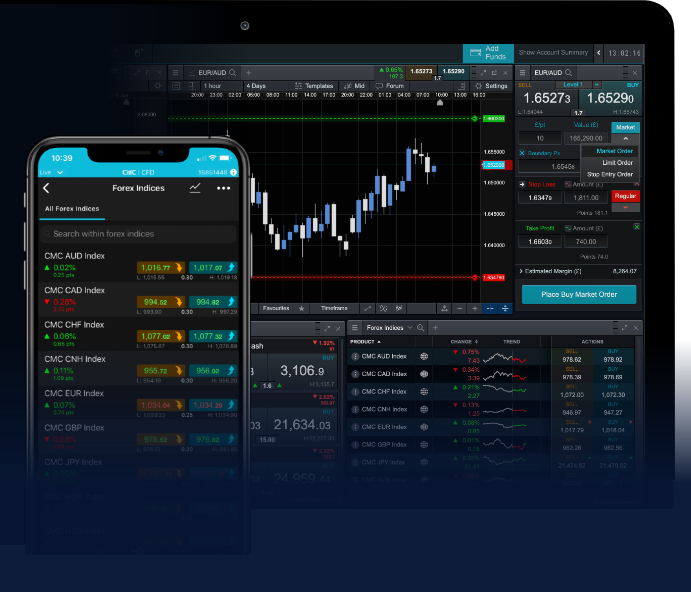
In the world of Forex trading, navigating the complex and fast-paced environment requires not just skill and experience but also the right tools. Among these tools, forex trading indicators onlinetrading-cm.com play a pivotal role. They help traders analyze price movements, identify trends, and make educated decisions about when to buy or sell currency pairs. This article will cover some of the most important indicators you should consider, how they work, and their applications in trading strategies.
Understanding Forex Trading Indicators
Forex trading indicators are mathematical calculations based on the price, volume, or open interest of a security. These indicators are used to forecast future price movements and inform traders about potential trading opportunities. They can be classified into two main categories: leading and lagging indicators.
Leading Indicators
Leading indicators are designed to predict future price movements. They provide signals before a new trend or reversal occurs. Some popular leading indicators include:
- Relative Strength Index (RSI): Measures the speed and change of price movements, used to identify overbought or oversold conditions in a market.
- Stochastic Oscillator: Compares a particular closing price of a currency pair to a range of its prices over a certain period, helping to identify momentum.
- MACD (Moving Average Convergence Divergence): Displays the relationship between two moving averages of a security’s price, indicating possible changes in momentum.
Lagging Indicators
Lagging indicators, on the other hand, follow price movements and are used to confirm trends. They are especially useful in determining the trend’s direction and strength. Popular lagging indicators include:
- Moving Averages: The most commonly used lagging indicator which smooths out price data to create a trend-following indicator. Traders commonly use Simple Moving Averages (SMA) and Exponential Moving Averages (EMA).
- Bollinger Bands: Consist of a middle band (SMA) and two outer bands that are plotted two standard deviations away from the middle band. They indicate volatility and potential price reversals.
- Averages True Range (ATR): Measures market volatility by decomposing the entire range of an asset price for that period. It is crucial in determining stop-loss and take-profit levels.
How to Use Forex Trading Indicators
Using indicators effectively involves knowing when to rely on them and how to apply them strategically. Here are some effective trading strategies that incorporate indicators:
Trend Following Strategy
One of the most popular strategies in Forex is trend following, where traders identify and follow the current market trend. Using moving averages, traders can smooth the data and easily identify the trend’s direction. For example, if the price is above the moving average, it indicates a bullish trend, while a price below the moving average suggests a bearish trend.

Momentum Trading Strategy
This strategy involves identifying a price’s strength and the speed at which it is moving. Traders often utilize RSI and Stochastic Oscillator to identify overbought or oversold levels, thus determining potential entry or exit points. Traders might buy when the RSI is below 30 and sell when it is above 70.
Reversal Trading Strategy
Reversal trading seeks to capture changes in market direction. Indicators like MACD or RSI can be beneficial for this strategy to show potential reversals. For instance, a bullish divergence, where the price makes a new low but the RSI does not, can indicate a potential reversal point.
Combining Indicators for Better Results
While each indicator provides valuable insights, combining multiple indicators can enhance decision-making. For instance, traders might combine RSI with Moving Averages to get a clearer picture. If the RSI shows overbought signals while the price is above a moving average, it may confirm the bullish trend’s strength.
Understanding Indicator Limitations
No indicator is foolproof, and every trader should be aware of their limitations. False signals can occur, leading to potential losses. Therefore, it is crucial to use indicators in conjunction with other analysis methods, such as fundamental analysis or price action strategies.
The Importance of Backtesting
Before implementing any trading strategy involving indicators, traders should backtest their chosen methods on historical data. Backtesting helps evaluate the effectiveness of the strategy and fine-tune it accordingly. It allows traders to understand potential performance across various market conditions, helping to build confidence before trading with real money.
Choosing the Right Indicators for Your Trading Style
Different traders have different trading styles, and the effectiveness of indicators can vary accordingly. Scalp traders may favor shorter-term indicators, while swing traders might look for longer-term indicators to gauge trends. Aspiring traders should consider their style, objectives, and risk tolerance when selecting which indicators to use.
Final Thoughts on Forex Trading Indicators
Forex trading indicators are indispensable tools that can support traders in making informed decisions. By understanding various indicators, their uses, and their limitations, traders can develop effective trading strategies tailored to their trading style. Remember that successful trading requires a combination of knowledge, skill, and the right tools. Stay disciplined, manage risks, and continually educate yourself to excel in the Forex market.